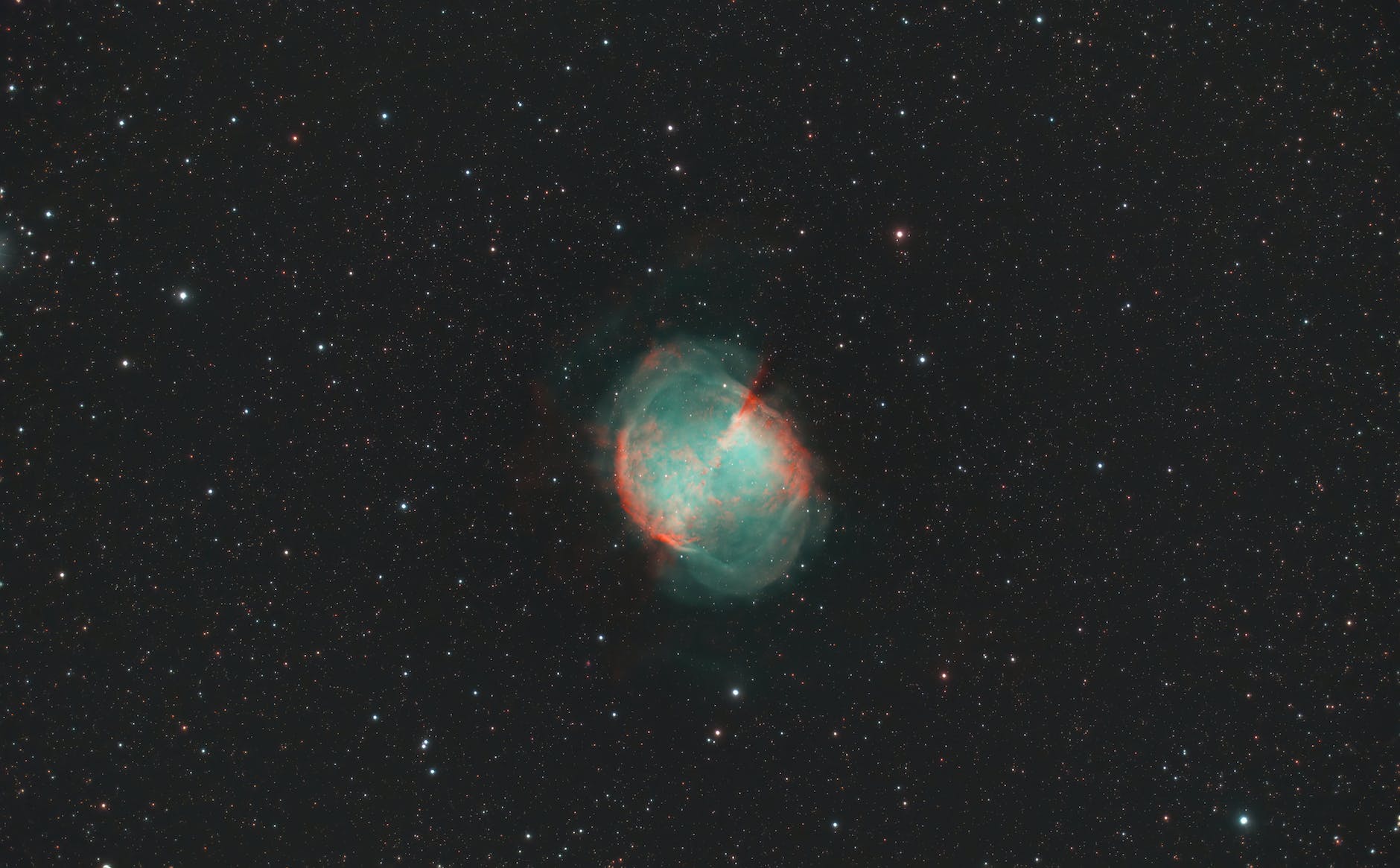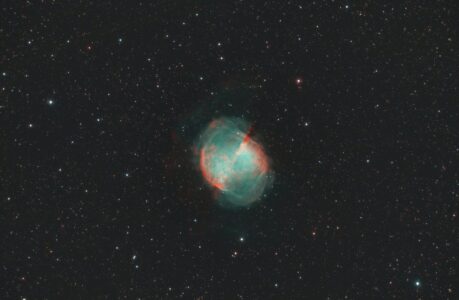Witness the Dazzling Beauty of the Dumbbell Nebula through Your Telescope!
The cosmos, with its countless galaxies, stars, and celestial wonders, has always captivated human imagination. Among these mesmerizing spectacles, the Dumbbell Nebula stands as a testament to the intricate dance of creation and destruction that occurs in the depths of space. In this comprehensive guide, we will delve into the awe-inspiring realm of the Dumbbell Nebula and equip you with the knowledge and tools needed to observe this cosmic marvel through your telescope.
Understanding the Dumbbell Nebula
What is the Dumbbell Nebula?
The Dumbbell Nebula, scientifically known as Messier 27 or M27, is a planetary nebula located in the Vulpecula constellation. Its distinctive name arises from its shape resembling a dumbbell or hourglass. This nebula is the result of a star’s final stages of evolution. As a star similar to our Sun exhausts its nuclear fuel, it expands into a red giant before shedding its outer layers into space. The intense ultraviolet radiation emitted by the remaining hot core ionizes the expelled material, causing it to glow and form the nebula we see today.
Characteristics and Composition
Spanning approximately 8 arc minutes across the sky, the Dumbbell Nebula boasts a striking appearance even through moderately sized telescopes. Its intricate structure reveals two lobes connected by a central bar, which give it the dumbbell-like appearance. The lobes consist of intricate filamentary structures, illuminated by the ionizing radiation from the central white dwarf star.
The nebula’s colors, predominantly pale blue and green hues, stem from the emissions of ionized oxygen and hydrogen. These gases are excited by the high-energy radiation emitted by the central star, causing them to emit light at specific wavelengths.
Preparation: Gear and Location
Selecting the Right Telescope
To embark on your journey to witness the Dumbbell Nebula, you’ll need a telescope that offers a clear and crisp view of distant objects. Telescopes with an aperture of 6 inches or larger are ideal for observing the details and nuances of the nebula’s structure.
Accessories for Enhanced Viewing
Enhance your viewing experience by using a few key accessories. A quality set of eyepieces will allow you to adjust the magnification, while a nebula filter will help enhance the contrast and visibility of the nebula’s details. A sturdy tripod or mount will provide stability to your telescope and reduce vibrations.
Choosing the Right Location
Light pollution can significantly hinder your ability to observe deep-sky objects like the Dumbbell Nebula. Head to a location with minimal light pollution, preferably away from urban areas. If possible, choose a night with clear skies and favorable weather conditions to ensure the best viewing experience.
Observing the Dumbbell Nebula
Finding the Dumbbell Nebula
Locating the Dumbbell Nebula in the night sky requires familiarity with the Vulpecula constellation. Using a star chart or a smartphone app, identify the key stars and patterns that lead you to the nebula’s location. It is situated near the star Gamma Sagittae, making it relatively easy to spot once you’ve located this reference point.
Patience and Dark Adaptation
Observing deep-sky objects demands patience and proper dark adaptation. Spend several minutes in darkness to allow your eyes to adjust to low light conditions. This will enable you to perceive the faint details and subtle colors of the nebula more effectively.
Adjusting Magnification
Begin your observation with lower magnification to encompass the entirety of the nebula’s structure. As you become more familiar with its appearance, gradually increase the magnification to zoom in on intricate features. Experiment with different eyepieces to find the optimal balance between magnification and clarity.
Notable Features to Look For
While observing the Dumbbell Nebula, you’ll encounter several noteworthy features:
- Bipolar Lobes: Observe the two lobes that give the nebula its name. Notice the intricate filamentary structures within each lobe, which are a result of the complex interplay between ionized gases and magnetic fields.
- Central Bar: Take note of the central bar connecting the lobes. This region often exhibits a higher concentration of ionized gases, leading to enhanced brightness.
- Color Variations: Pay attention to the subtle variations in color across the nebula. These color shifts indicate differences in the ionization and composition of gases within different regions.
- Central Star: If your telescope’s aperture allows, try to spot the faint central white dwarf star responsible for illuminating the nebula. While challenging, glimpsing this star adds an extra layer of awe to your observation.
Photographing the Dumbbell Nebula
Capturing the beauty of the Dumbbell Nebula through astrophotography is a rewarding endeavor. Here’s how to get started:
Required Equipment
Astrophotography requires specialized equipment beyond a standard telescope. You’ll need a DSLR or mirrorless camera with manual settings, a sturdy tripod, and a T-ring adapter compatible with your camera model.
To photograph the Dumbbell Nebula, utilize the long exposure technique. This involves leaving the camera’s shutter open for an extended period, allowing the faint light from the nebula to accumulate on the camera sensor. Start with exposures of 30 seconds to 1 minute and gradually increase the exposure time to capture more detail.
Image Stacking and Processing
After capturing multiple long-exposure images, use image stacking software to combine them into a single image. This process helps reduce noise and enhance the nebula’s details. Post-processing software such as Adobe Photoshop or specialized astrophotography software can be used to fine-tune the image’s colors, contrast, and sharpness.
Sharing the Experience
Astrophotography and observations of celestial wonders are meant to be shared and celebrated. Consider participating in astronomy clubs or online forums to connect with fellow enthusiasts. Sharing your observations and images can inspire others to embark on their own cosmic journeys.
Conclusion
The Dumbbell Nebula beckons stargazers and astrophotographers alike to uncover the hidden secrets of the universe. Through the lens of your telescope, this celestial gem reveals its intricate structure and captivating colors, offering a glimpse into the dynamic forces that shape our cosmos. With the right gear, location, and techniques, you can embark on an unforgettable journey to witness the beauty of the Dumbbell Nebula and capture its splendor through astrophotography. So, prepare your telescope, venture to a dark sky site, and prepare to be awed by the magnificence that lies beyond our world.

